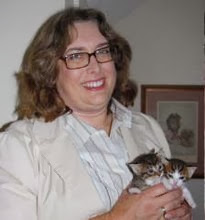Breaking News: Federal Judge Terminates Kathy Bauck’s USDA License
Animal Welfare Advocates Express Concern for Several Hundred Dogs Remaining in Her Care
Kathy Bauck, a Minnesota-based dog breeder, is arguably one of the nation's most notorious puppy mill operators. For years, Bauck has been making headlines all around the United States. She has been accused of selling sick puppies, of misrepresenting her animals, and of practicing veterinary medicine without a licence. She has also been convicted multiple times of animal cruelty and animal torture.
Bauck’s most recent conviction included 4 counts of animal cruelty and torture – a verdict that was handed down in March of 2009. At that time, most Minnesotans believed that would be the end of Bauck’s operation. They were wrong. Bauck has continued to operate two businesses, “Pick of the Litter” and “Puppies on Wheels” ever since.
“Most people are shocked to find out that a puppy mill operator in Minnesota can be convicted of cruelty and torture of animals, and continue operating,” said Mike Fry, Executive Director of Animal Ark, Minnesota’s largest no kill animal welfare organization, and a nationally recognized expert on puppy mills.
“People think that a cruelty conviction would automatically put an operation like this out of business. That is simply not the case, because the State of Minnesota has no means whatsoever available to regulate puppy mills,” Fry said.
This week, a federal judge responded to a request for summary judgment to revoke Bauck’s USDA license. The USDA itself made that request. In its request to have Bauck’s license terminated, the USDA stated that Bauck and her family were “unfit” to operate a breeding operation. On December 2, the judge announced their decision, in favor of the USDA’s request, and allowing Bauck 10 days for appeal.
“The irony is that if the revocation of Bauck’s USDA license stands, she will still be able to keep her dogs,” said Dr. Linda Wolf a veterinarian who served as one of the key expert witnesses in the most recent animal cruelty case against Bauck.
“The USDA only regulates the sale of dogs to commercial sources, like pet shops, brokers and wholesalers. They have no say as to whether or not Bauck gets to keep her dogs,” Wolf added.
A strange, disconnected patchwork of laws allows Bauck to keep hundreds of breeding dogs without a USDA license and after having been convicted of animal cruelty and torture and of practicing veterinary medicine without a license.
“A key piece of legislation is missing from the regulatory and enforcement scheme in Minnesota,” said Fry. “There is no State law allowing intervention or enforcement at all.”
Fry adds that the judge could have ordered the confiscation of her dogs when she was convicted of animal cruelty and torture. However, because she – like most other large-scale puppy mills – lives in a very small rural county, taking this action would have been nearly impossible.
“During her career, Bauck has held up to 1,200 breeding dogs at one time, plus puppies,” said Fry. “State law requires that animals confiscated due to cruelty charges be impounded for a minimum of 10 days. If the puppy mill operator appeals, the impoundment period could drag on for months and cost the county millions of dollars.”
In other words, Fry says, the State of Minnesota, due to its failure to regulate the large-scale, commercial dog breeding industry, has allowed businesses to grow to a size where the counties simply cannot regulate them. Some counties have fixed this problem by enacting local ordinances that limit the number of breeding animals an operator may own. However, according to Fry, and a growing number of breeders, veterinarians and animal welfare advocates, that is simply not enough.
“We need a State-level law that provides for regulation and enforcement of this industry,” said Dr. Wolf.
Fry, Wolf and many others have been working for several years to draft and pass legislation that would close this gaping loophole in the animal welfare statutes. As a result, two companion bills were introduced in the Minnesota House and Senate last year. Senate File 7 and House File 253 would help the State to enforce existing animal welfare statutes, and would prevent people who have been convicted of animal cruelty and animal torture from operating puppy mills, something that seems pretty common-sense to most Minnesotans.
Last year, Senate File 7 and House File 253 made good progress moving through the legislature. After passing several committees, both bills landed in the Agriculture Committees in the House and Senate, where they are expected to receive hearings early in 2010.
“The little opposition to these bills that has been seen at the legislature has almost all come from the people in the Ag Industry,” said Fry. “So, while there is widespread support for this urgently needed legislation, we need supporters to show up and let their voices be heard at the legislature in 2010.”
In the meantime, animal welfare advocates are concerned with the plight of the dogs remaining on Bauck’s property.
“The termination of Bauck’s USDA license prevents her from selling dogs to her normal sales channels,” added Wolf. “Without the ability to sell the dogs, and to make money, her ability to care for several hundred dogs is seriously in question.”
According to estimates, there are several hundred dogs remaining on the property. If closed, it could be one of the largest puppy mill closures in US history. She has been in operation for approximately 20 years.
 Cat 2=intact male
Cat 2=intact male Cat 3=neutered male, front declawed
Cat 3=neutered male, front declawed Cat 4=intact male
Cat 4=intact male Cat 5=neutered male
Cat 5=neutered male Cat 6=intact male
Cat 6=intact male Cat 7=Female
Cat 7=Female Cat 8=intact male
Cat 8=intact male



















